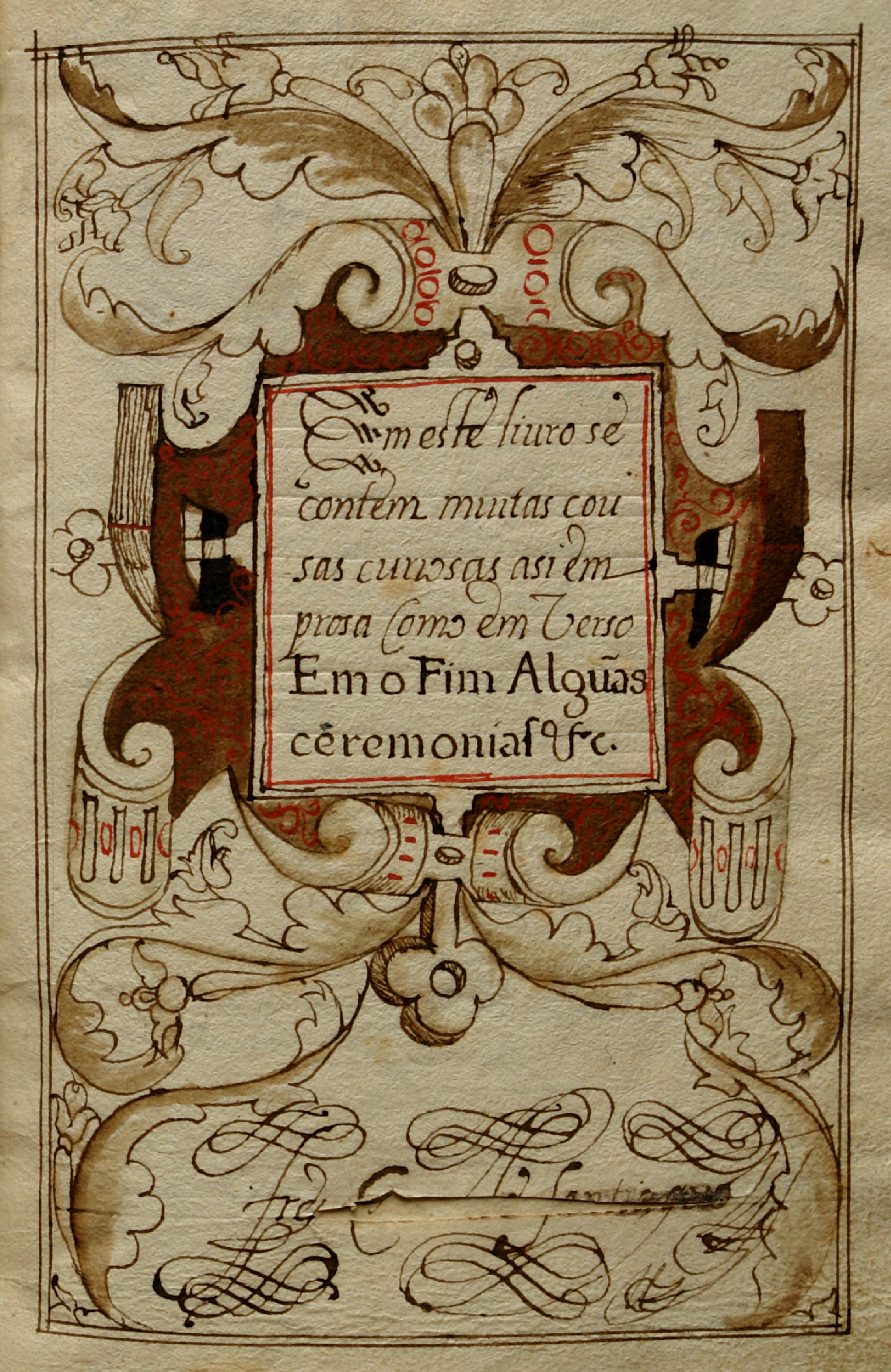|
Cancioneiro De Belém
The Cancioneiro Musical de Belém (English: Belém Musical Songbook) or simply Cancioneiro de Belém (Santa Maria de Belém, Lisbon, National Archaeology Museum, Ms 3391) is a Portuguese Renaissance manuscript from the beginning of the 17th century. General description This little manuscript with just 18 songs was found in the archives of the National Archaeology Museum, in Belém (Lisbon), by the end of the 1960s by professors Arthur Lee-Francis Askins and Jack Sage, specialists in Iberian lyric of the 16th century. It was later studied by Manuel Morais, who published in 1988 a critical edition of the cancioneiro, together with a musical transcription to modern notation of all eighteen songs. Currently with 77 folios sized 191 x 130 mm, the songs proper are found between folios 58v and 74. In recent times (possibly in the 19th century) the manuscript received a brown leather cover, to which side a title was added: ''Manuscriptos / Varios''. Inside the songbook, an inscrip ... [...More Info...] [...Related Items...] OR: [Wikipedia] [Google] [Baidu] |
Cancioneiro Musical De Belém - Title Page
A chansonnier ( ca, cançoner, oc, cançonièr, Galician language, Galician and pt, cancioneiro, it, canzoniere or ''canzoniéro'', es, cancionero) is a manuscript or printed book which contains a collection of chansons, or polyphonic and Monophony, monophonic setting (music), settings of songs, hence literally "songbook, song-books"; however, some manuscripts are called chansonniers even though they preserve the text but not the music, for example, the Cancioneiro da Vaticana and Cancioneiro da Biblioteca Nacional, which contain the bulk of Galician-Portuguese lyrics. The most important chansonniers contain lyrics, poems and songs of the troubadours and trouvères used in the medieval music. Prior to 1420, many song-books contained both sacred and secular music, one exception being those containing the work of Guillaume de Machaut. Around 1420, sacred and secular music was segregated into separate sources, with large choirbooks containing sacred music, and smaller chansonnier ... [...More Info...] [...Related Items...] OR: [Wikipedia] [Google] [Baidu] |
Antonio De Villegas
Antonio de Villegas ( Medina del Campo, Valladolid, España, c. 1522 – c. 1551) was a Spanish writer. Together with Gregorio Silvestre and other disciples of Cristóbal de Castillejo, he stood against the Italianating tendencies of the poetry of his time. He wrote works in prose and verse, gathered in a compilation titled ''Inventario'' (Inventory, 1565), which includes the story ''Historia del Abencerraje y la hermosa Jarifa'', written in 1551 and considered the first Moorish novel. It tells how a Muslim, prisoner to a Christian named Rodrigo de Narváez, recovers his freedom by keeping his word and returning to prison after being released to marry his beloved Jarifa. However, modern critics deny Villegas the authorship of this novel. The work's brevity and success caused it to be included, from 1561 onwards, after the fourth book of Jorge de Montemor's ''Diana''. Lope de Vega wrote his comedy ''El remedio en la desdicha'' on this theme; Juan de Timoneda, Sebastián de Covarru ... [...More Info...] [...Related Items...] OR: [Wikipedia] [Google] [Baidu] |
